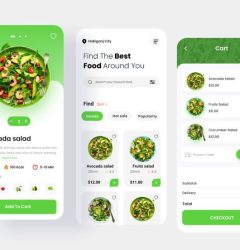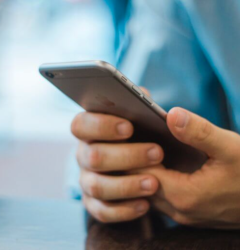05 Nov

When it comes to delivery apps, both speed and design play a critical role in keeping users satisfied. Slow loading times and lagging interfaces can lead to high abandonment rates and poor user experiences. Optimizing your app’s design not only makes it look better but also enhances speed, creating a more seamless experience for users. Here are some key design-focused tips to speed up your delivery app.
1. Focus on a Minimalist UI Design
A cluttered user interface can slow down your app and overwhelm users. Minimalism in design is not only trendy but also highly effective in boosting speed and usability.
a. Limit Visual Elements: Keep visual elements simple. Avoid overusing graphics, animations, and colors that can weigh down the app’s loading speed.
b. Prioritize Essential Features: Display only the most critical functions on the main screen. For example, highlight the delivery tracking or order history for ease of access, while keeping additional features in expandable menus.
c. Optimize Typography and Icons: Use web-friendly fonts and scalable vector icons. This improves readability and loads faster on different devices, particularly mobile.
2. Use Fast-Loading, High-Quality Images
Images are essential for visual appeal but can slow down your app if not managed correctly. A few adjustments can significantly reduce load time without sacrificing image quality.
a. Compress Images: Use tools to compress images, such as WebP format, without losing visual clarity. Compressed images load faster, saving time and data.
b. Implement Lazy Loading: Only load images when users scroll to the relevant section. This way, users don’t have to wait for all images to load before accessing essential features.
c. Limit High-Resolution Banners: Avoid using high-res banners across all screens. Instead, opt for smaller, optimized images that fit each screen’s dimensions.
3. Enhance Navigation with a Streamlined Layout
A well-organized layout minimizes friction for users, enabling them to interact with the app quickly and intuitively. A streamlined layout also ensures that your app is responsive and efficient.
a. Use a Fixed Navigation Bar: Include a fixed nav bar for quick access to core functions (e.g., Home, Orders, Profile) without reloading screens.
b. Prioritize the CTA Button: Place the call-to-action (CTA) buttons; such as “Order Now” or “Track Order” in prominent positions, reducing the need for multiple taps and improving the overall flow.
4. Adopt a Mobile-First Design Approach
Most users access delivery apps on their phones, so a mobile-first design ensures a fast, responsive experience across all devices.
a. Optimize for Different Screen Sizes: Make sure your app’s layout adapts to various screen sizes, from small phones to large tablets, without compromising performance.
b. Use Touch-Friendly Design: Design larger, easily tappable buttons and intuitive swipe actions to enhance usability and reduce navigation time.
c. Reduce Pop-Ups and Interruptions: Avoid frequent pop-ups and push notifications, as these can slow down navigation and frustrate users on mobile devices.
5. Optimize Color and Contrast for Speed and Accessibility
Color choices impact both the user experience and app performance. Effective use of color and contrast can improve speed, user engagement, and accessibility.
a. Use Lightweight Color Schemes: Dark and light themes with limited gradients and shadows load faster than complex color schemes. This also saves battery life on mobile devices.
b. Maintain High Contrast for Visibility: Ensure contrast between text and background is high, making it easy to read without straining the eyes. This is especially important in low-light or outdoor settings.
c. Optimize for Accessibility Standards: Use accessible color combinations and allow users to adjust settings to improve readability and ease of use, which contributes to a positive, efficient experience.
6. Ensure SEO-Friendly App Content for Search Visibility
SEO is not just for websites; delivery apps can also benefit from SEO by making content easily searchable and user-friendly.
a. Optimize Meta Tags and Descriptions: Include relevant keywords in your app’s meta tags, descriptions, and titles to help it rank in app stores and online searches.
b. Incorporate Location-Based Keywords: Use local keywords like “fast delivery in [City]” to reach users searching for nearby delivery services.
Conclusion
In today’s fast-paced world, a delivery app must balance speed with user-friendly design to stay competitive. Prioritizing minimalist interfaces, optimized images, and responsive layouts can significantly reduce loading times, while regular performance testing and caching ensure your app meets user expectations consistently. With a well-optimized design, your app not only performs better but also enhances customer satisfaction, leading to increased loyalty and positive reviews.
If you’re ready to take your delivery business to the next level, consider Zeew. With our end-to-end delivery platform, we empower businesses to launch and scale delivery services with ease. Zeew’s solutions offer optimized performance, customization options, and seamless integration, helping you create a fast, efficient delivery app that meets the demands of today’s market.







